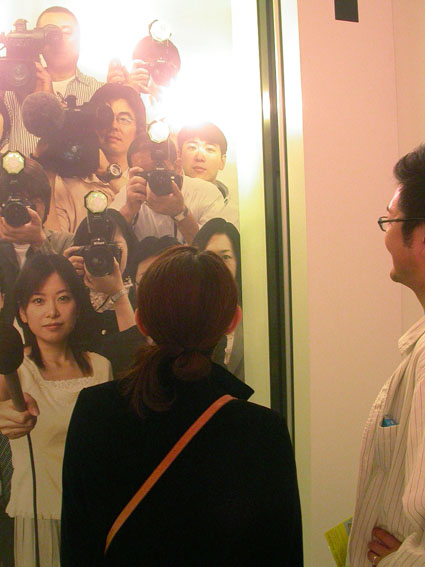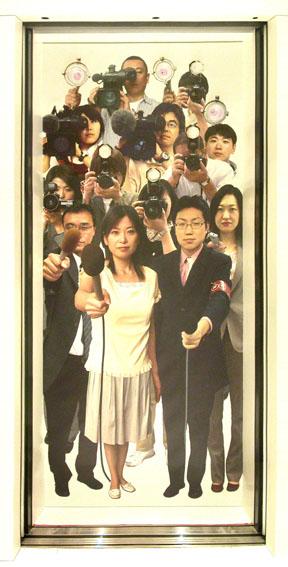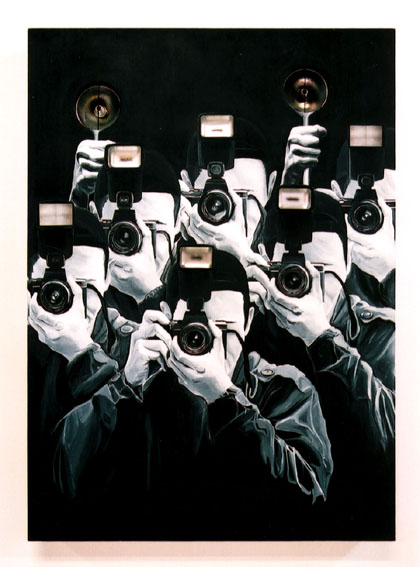 |
---------- |  |
r#176 PTSD Aomori キャンバスにデジタルプリント フラッシュランプ、ハロゲンランプ他 printed on Canvas, Flash lamps, halogen lamps 青森県立美術館内エレベーター出口に設置。 Installed at the exit of the elebator of the Museum of Art, Aomori |
||
| r#176 PTSD Aomori This is an installation work when visitors get off the elevator in Aomori Museum of Art, they are blocked by the canvas which is printed the photographic image of press crops in the local area, and be exposed to flashlights and halogen lights like public figures. I wanted to question about the public morality through the work, and when I requested to interview press companies in Aomori, they kindly accepted me except only one company. Some of them had in-house arguments, then finally cooperated my interviews to express their self disciplines. |
||
| 041 r#176 PTSD Aomori 青森県立美術館内のエレベーターを降りようとすると"青森マスコミ陣がカメラの放列を敷いている"パネルに塞がれ、 ハロゲンライトとフラッシュライトにさらされるという作品である。 報道倫理を問う内容の作品であるが、取材をお願いした青森マスコミ各社は、1社を除いてすべてが受けて下さった。 中には社内での議論の末、自戒の意を込めて協力して下さったところもあった。 協力:東奥日報社、ATV青森テレビ、ABA青森朝日放送、NHK青森放送局 (週刊金曜日2006年10月27日号より 連載「珈琲破壊」041) |
||
パネル裏面 |
 |
|
r#99 PTSD 1999 パネルにアクリル絵具 フラッシュランプ、ハロゲンランプ他 Acrylic on Canvas, Flash lamps, halogen lamps ラフォーレ小倉エレベーター内に設置。 Installed in the elebator of the Raforet KOKURA, Kitakyusyu |
||
| r#99 PTSD 絵画の前に立つ人は”無差別に”4つのフラッシュ・ライトと2つのハロゲン・ランプが発する光にさらされる。 マスコミによって「一般の人々の興味」という大義名分の元、 強制的に被写体にさせられる恐怖は体験した者にしか分からない。 その疑似体験を意図して制作したものの、残念なことにこの絵画の前に立つ人々の感想は「スター気分」であった。 (週刊金曜日2006年3月24日号より 連載「珈琲破壊」011) |
||
 |
||